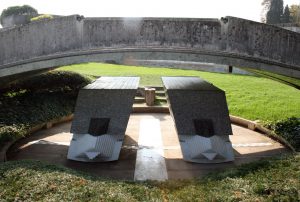“The child says nothing because he is afraid but this music teacher understands that he is on the run from his family. Somehow, he soon realizes that neither the law nor the most normal act – handing him back to the mother – can save the child. He has to take care of him”. With these words Roberto Andò, director and writer, tells and explains the essence of his The Hidden Child, first novel and now film. The protagonist Silvio Orlando is linked to him: “I sense that his destiny is sealed. I understand that he has committed a disrespect to someone important who is not forgiven under a criminal code. I sense it, I understand it, I feel it. Only I can save him. This child is looking for me perhaps because I am the most different element of that context. He doesn’t know me, he doesn’t know who I am, but he understands that maybe I’m his only escape route. Thus, in this film we meet a middle-aged man, of a middle culture and social class, and a child looking for a future in a neighborhood of Naples that is not really recommendable. “This is a story that can only be set in Naples in my opinion, because only in this city can a professor of that kind live side by side with a family belonging to the Camorra; elsewhere it would be impossible because there is a total division between the popular and bourgeois classes. Instead, this distance should be shortened once and for all”, adds the actor. In this atmosphere, two solitudes meet. They meet in order to escape, out of necessity, out of fear, out of the need to survive. It is always in this way that two perfect strangers gradually become a reference point for each other. Salvation, refuge, new life. In this cinematic narrative, composed of silences and glances, Gabriele Santoro, this is the professor’s name, often repeats from memory a poem that says “when you set out on a journey to Ithaca you must hope that the road is long, fertile in adventures and experiences” Few and precise words that contain all the value of the film. More specifically, Gabriele Santoro lives in a popular neighborhood in Naples and teaches piano at the San Pietro a Majella Conservatory. One morning, while he is shaving his beard and the postman rings the intercom to warn him that there is a package, he opens the door and runs to wash his face, leaving the entrance to the house unattended and thus allowing little Ciro to sneak in and hide. Gabriele Santoro, “the teacher” as he is called in the neighborhood, will only notice this child in his home late in the evening. His instinct immediately suggests to him not to speak to any of this guest, rather to guard him with care and respect. The story unfolds in a few square meters, those of an elegant apartment. Here we measure different sensations and contrasting emotions of life but also two completely different, difficult and distrustful spirits. “This apartment is a sort of mysterious den as Naples itself often is, full of ravines, hidden holes that make you hide and save at the right time”, underlines Orlando. Ciro is a “fugitive”, it is true, but even before him and for different reasons, Gabriele Santoro also did a similar thing. “Both of them are running away from something,” adds the actor. “Even my character has somehow escaped from his family stock with which he has several misunderstandings. These are two families from which both are expelled, but there is Ciro’s mother who in her own way plays a fundamental role. She also understands something and helps his escape”. The hidden child is one of those films to be loved by those who feed on beauty, art, poetry, and at the same time to be detested by those who need speed, visual frenzy and language. The Hidden Child is a film about the desire for help, play, understanding and protection, which basically concerns all generations and social backgrounds.













